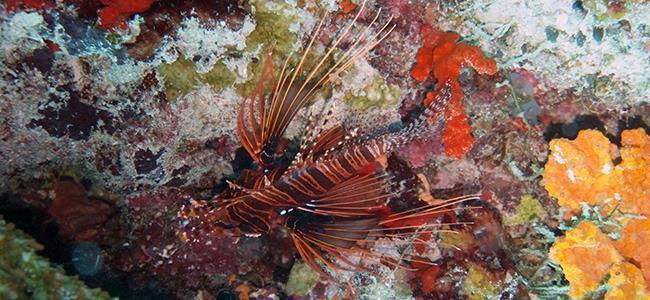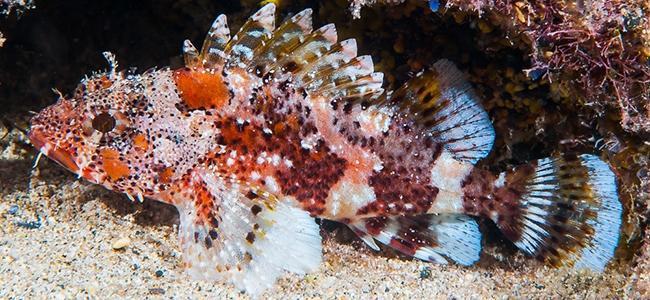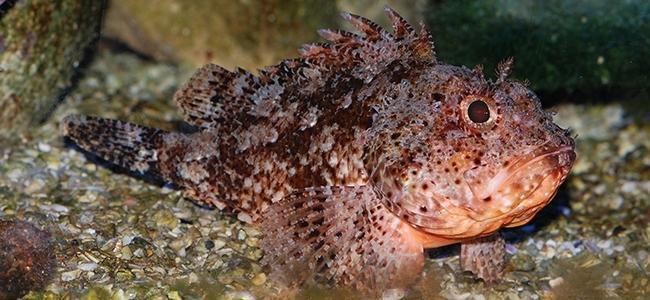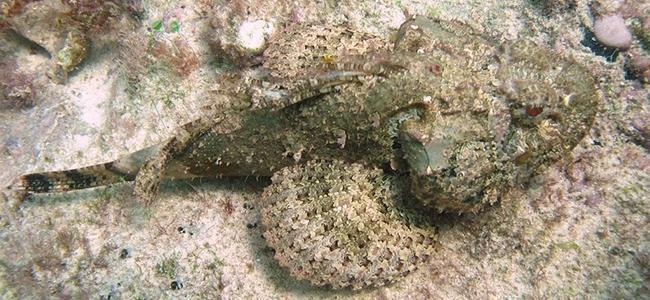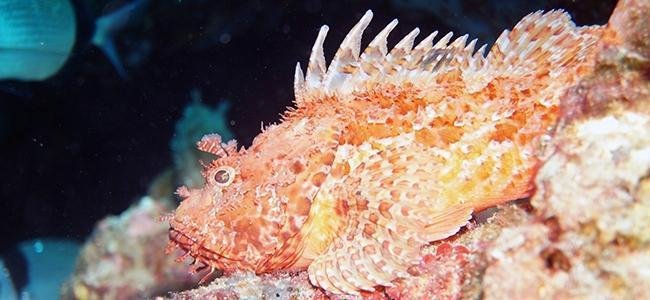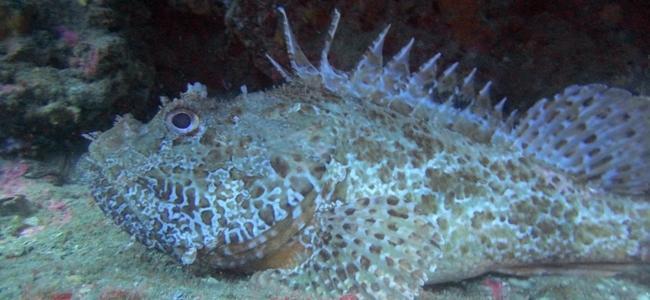Mail-cheeked fishes (order Scorpaeniformes) are a diverse group of fishes that have both the body and the head with a spiny appearance or covered by bony plates. The name derives from the Greek 'skopaina', a term used to refer to the diminutive of scorpion in allusion to the presence of numerous spines in these species.
The pectoral fins of mail-cheeked fishes are usually rounded, large and with membranes, often incised between the rays. In most species, the caudal fin is rounded in form, although there are species with truncated and rarely forked caudal fins. It is common for some of their fin spines to be connected to venom glands.
Predominantly carnivorous, they feed mainly on crustaceans and fish that they catch unnoticed thanks to their coloration and texture. Many species have elaborate cirri, filaments and appendages that allow them to camouflage themselves and wait for prey to pass in front of them unnoticed.
The vast majority of mail-cheeked fishes inhabit the seabed in shallow waters, although there are also some species capable of living at depths of up to 2,000 meters. Members of this group of fishes are widely distributed in tropical and temperate environments. Most species are marine, although there are some freshwater species.
The average size among the species is 30 cm in length, with sizes varying from a few 2 cm for the aploactinids (Aploactinidae), to over 150 cm as in the case of Ophiodon elongatus.
Mail-cheeked fishes are one of the 5 orders of fishes with the largest number of species. A total of 2,092 species have been described, grouped into 6 suborders (Scorpaenoidei, Platycephaloidei, Normanichthyoidei, Zoarcoidei, Gasterosteoidei and Cottoidei), 41 families and 398 genera. Many of the mail-cheeked fishes species are of commercial interest as their meat is considered excellent. Other species are of great recreational interest as they are highly sought after by sport fishermen.
